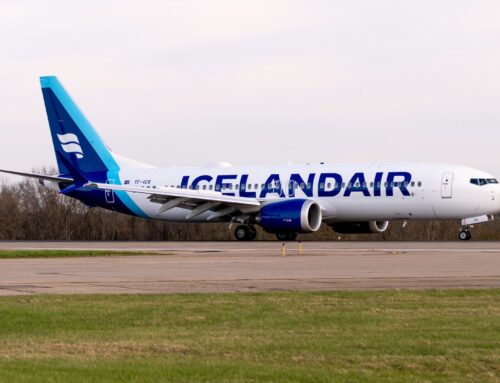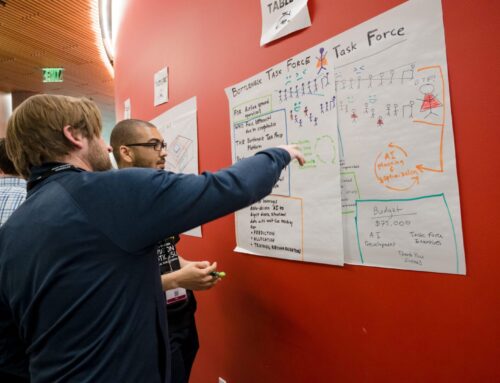American’s Maintenance Base at PIT Grows in Importance
Facility adds hundreds of jobs, growing to airline’s second largest
By Matt Neistein
Published January 8, 2024
Read Time: 5 mins
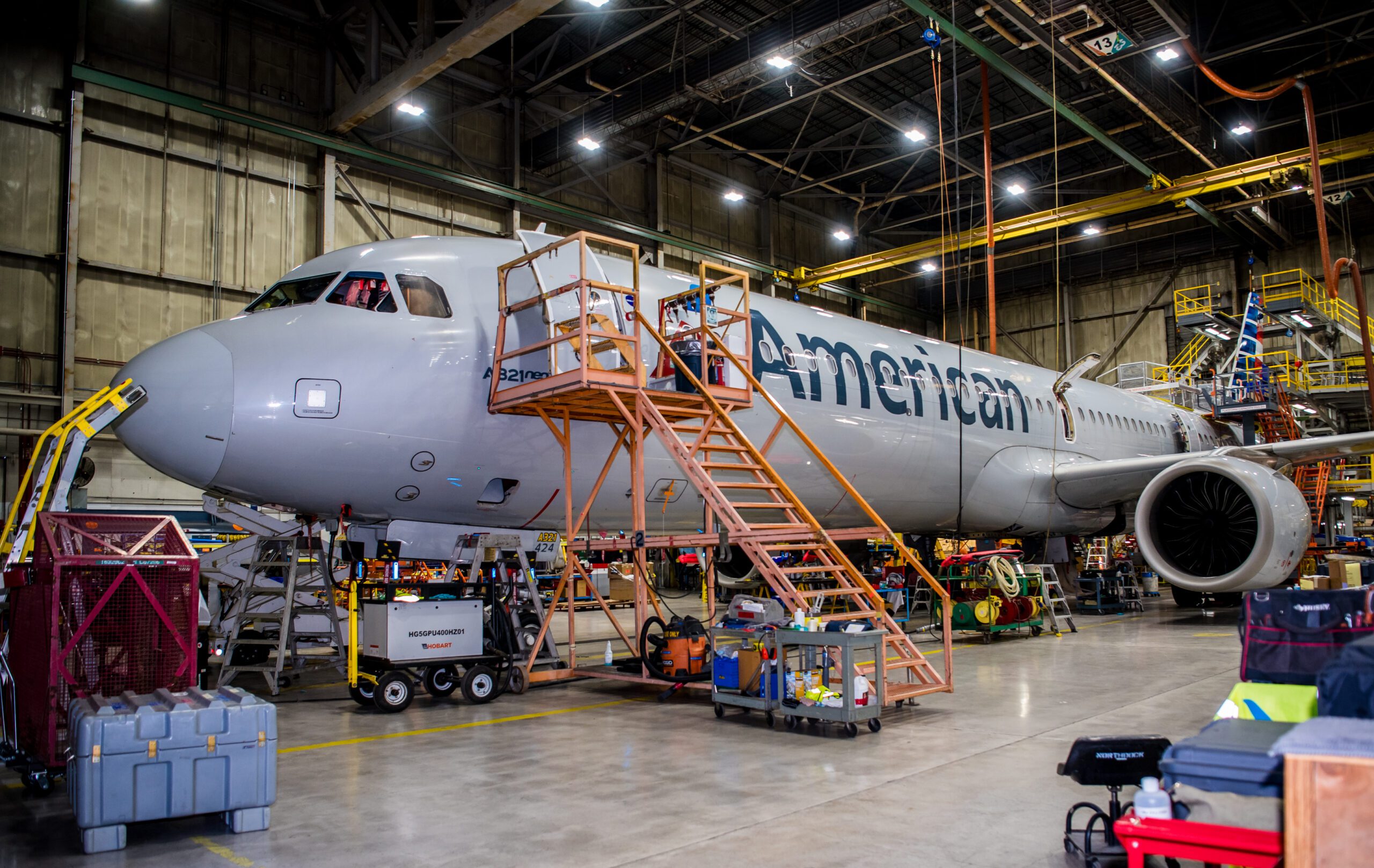
American Airlines’ long history in Western Pennsylvania is entering a new era as the airline heavily invests in its maintenance base at Pittsburgh International Airport.
This year, the base expects to have more than 320 aviation maintenance technicians (AMTs), or mechanics—nearly double its staffing level from August 2022. And that doesn’t count support staff, such as inspectors and aircraft cleaners, who work at the facility as well.
In all, the base expects to add more than 200 jobs between this year and next, with the base supporting approximately 600 jobs in total.
The ongoing staffing additions have made Pittsburgh the second-largest maintenance base in American’s entire network, behind only Tulsa. And Mark Mascara, the airline’s base senior manager, believes opportunity remains.
“We’re going to do our bread-and-butter C-check. We’re going to do what we can for the airline,” he said. “But there’s still more that we can do, more that we can give.”
Officials at Pittsburgh International Airport value the maintenance base’s role not just at the airport, but in the wider community as well.
“The airport is an economic engine for our region, and our airline partners are obviously a significant part of that impact,” said Bryan Dietz, Senior Vice President, Air Service & Commercial Development.
“American’s base has been here for decades and hosted thousands of high-paying jobs in that time,” he said. “We know the critical role this base plays not just for the airline and for Western Pennsylvania but for the aviation system in safely ensuring American Airlines can keep our customers moving. We will continue to support this base’s success story and continued growth.”
Getting the job done
The American facility at PIT serves Airbus narrowbody aircraft, which make up about half of the airline’s nearly 1,000-plane fleet—the largest in the world. It operates more Airbus A319, A320 and A321 models than any other airline on the planet.
The airline’s facility at PIT, designated an “Airbus Center of Excellence” for its expertise, has room for three aircraft at a time, two of which are reserved for C-checks. These are the routine maintenance reviews every aircraft in the fleet must undergo every six years.
C-checks include work like examining the fuselage and wings for damage, checking the operation of electrical connections, working on landing gear and engines, completing wiring modifications, and inspecting flight controls. It can take thousands of maintenance hours to complete a C-check.
Aircraft due for a check are scheduled for a route that serves PIT, pulled out of service for work and then rotated back into service after the check is complete. Mechanics at the base turn an aircraft in less than 11 days, about four days better than comparable facilities elsewhere in the U.S.
In fact, in the last quarter of 2023, the team has only missed the timeline on one plane, which was two shifts late—less than a day. Asked how his team does it, Mascara doesn’t hesitate.
“It’s pride,” he said.
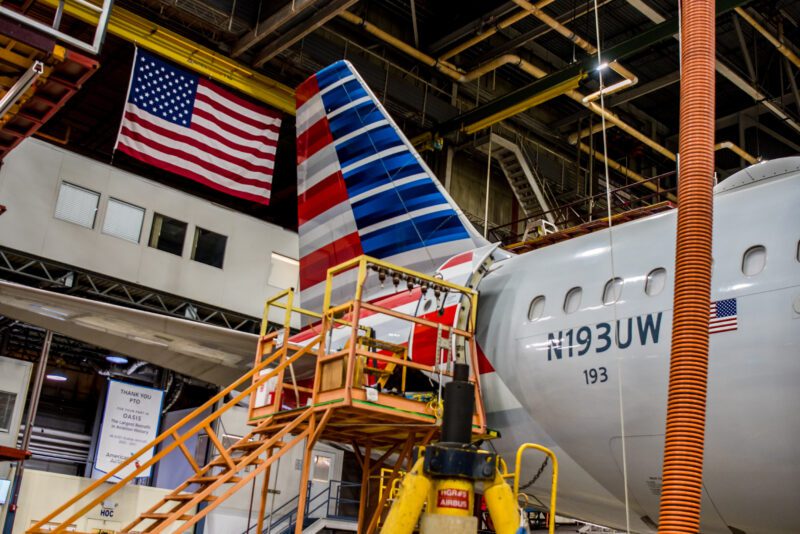
An American A321 undergoes maintenance at PIT on Dec. 15, 2023. Designated as an Airbus Center of Excellence, American’s PIT facility has room for up to three planes at a time, including C-checks, which is an extensive examination required for all aircraft every six years. (Photo by Beth Hollerich)
The third bay at the facility is reserved for “special visits”: aircraft that have a specific issue that needs to be fixed. The base repaired 13 such aircraft this year.
All of that work is done by staff designated as “base” mechanics. Another group known as “line” mechanics focus on the aircraft that fly in and out of PIT each day. They do routine maintenance and inspection tasks as well as brief scheduled checks on planes that stay overnight before departing in the morning on the next day’s routes.
Road map for growth
Mascara, who grew up in Pittsburgh’s Lincoln Place neighborhood less than a mile from Allegheny County Airport (AGC), began his career in 1999 with US Airways in Pittsburgh before working at various airports and facilities around the country. He stayed with the company through its 2005 bankruptcy and 2014 merger with American.
When Mascara returned to PIT in August 2022, the maintenance base was staffed by 168 mechanics working out of two hangars. At its peak, the base had four hangars staffed by more than 1,500 mechanics.
“We get told all the time, ‘I don’t worry what happens in Pittsburgh, I know you guys got it,’” he said. “But I don’t want to go under the radar—I’d rather go above the radar. Not only can we do the C-checks, but we can do more.”
The announcement of American’s investment reenergized the entire team, he said.
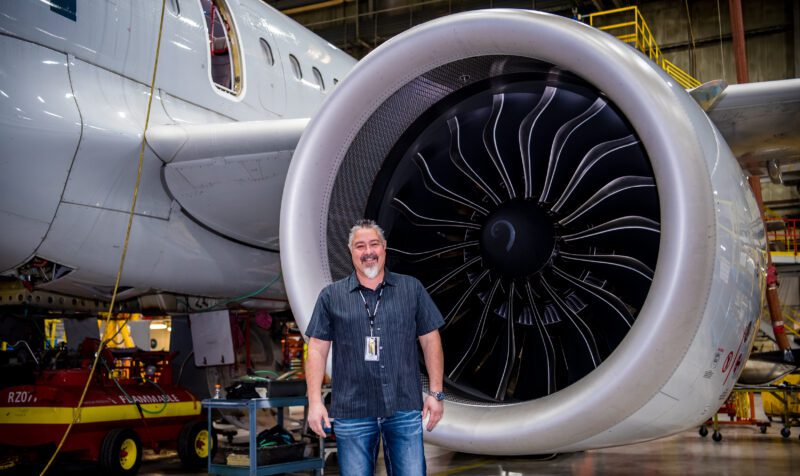
A native of Lincoln Place, American senior base manager Mark Mascara began his aviation career with US Airways in Pittsburgh in 1999. Mascara returned to PIT in August 2022 after previously working at various U.S. facilities and through US Airways’ merger with American. (Photo by Beth Hollerich)
High-paying careers
The base’s secret weapon, so to speak, is actually located at AGC, which is also operated by the Allegheny County Airport Authority (ACAA).
Pittsburgh Institute of Aeronautics (PIA), one of the nation’s premier aviation mechanic schools, has been a part of AGC’s campus since the 1930s. Students complete a 20-month course to be certified to work on commercial aircraft and then move into jobs with starting salaries ranging from $50,000 to $55,000 a year.
Experienced mechanics can easily make six figures, Mascara said.
The entire management team at the base is composed of PIA graduates, including Mascara. And 75 percent of the mechanics on staff learned their trade at PIA, he said.
“ACAA is proud to be a partner for success for many years, not just with support assuring the maintenance base stays in Pittsburgh, but working on so many aspects that speak directly toward expansion growth such as PIA,” said Vince Gastgeb, Chief Government & Corporate Affairs Officer. “Having the talent pipeline on property allows for a direct connection to complement other identified aspects needed for growth.”
PIA, named by Forbes as a Top Two-Year Trade School in 2018, stands ready to help, said Steven Sabold, PIA’s vice president of operations.
Typically, graduates start at smaller regional carriers like Republic Airways, which flies the American Eagle brand at PIT, before moving onto legacy airlines like American.
“Since the current demand for aircraft technicians is so high, many PIA students have job offers prior to graduation. Many students base those decisions on the employer’s location,” Sabold said.
“When a student’s preference is to stay local, it’s great to have an option in our backyard. When American Airlines or Republic Airways are growing locally, PIA can provide a pipeline of certificated aviation technicians to support their recruiting needs. It’s beneficial for everyone involved.”

